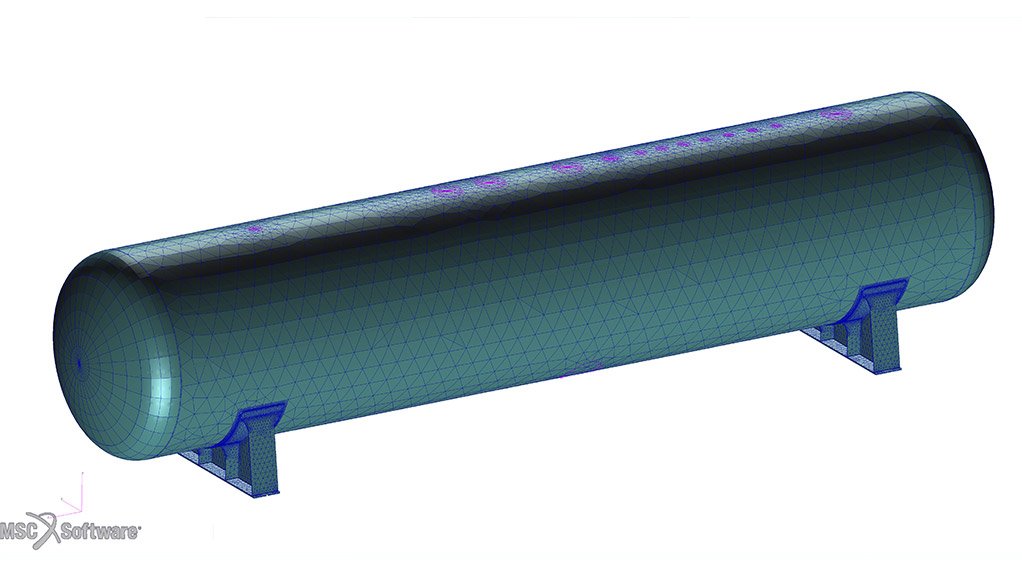
Historical model - mesh layout
Structural steel designers and fabricators Structa Group of companies manufactures and supplies a range of infrastructure-related products including water storage tanks and industrial process equipment.
Its subsidiaries, including industrial equipment supplier Turnmill Proquip Engineering, have client lists which include several local and international mineral resource companies.
Structa principal engineer Jacques Bester warns that, given the rise of mechanisation in the industry and the subsequent increased implementation of advanced technology solutions, the industry requires well trained, experienced engineers to be involved throughout the entire process, including the application and interpretation of the analyses, which is where Structa leverages its experience in the mining industry.
Structa Group supports its subsidiaries in this regard with its analysis and design team, housed within its Structa Konsult business unit, not only serving the group but consulting and assisting various external clients.
Citing Turnmill Proquip as an example, he notes that, in terms of vessel manufacture, standard code rules, which have been based on experimental testing over the last century, do not include provisions for all possible design variations. Therefore, Turnmill Proquip leverages its access to Structa Konsult to generate high accuracy geometric models of every component to verify design details using finite element modelling and advanced non-linear solutions.
Detail design of process equipment is regulated by the Pressure Equipment Regulations and classified according to SANS 347 in South Africa.
The use of advanced analysis techniques is supported by most of the codes in which a typical “protection against failure” evaluation procedure is followed. Essentially, Bester notes that the design of the vessel, for example, should ensure that it does not leak or burst on the first pressure cycle nor should it deform excessively under operating conditions. High-temperature operation and high-cyclic loading are also verified in these design stages.
Advances in software capability and computing capacity facilitated the development of sophisticated structural and flow simulation procedures. Over the last 20 years, this development has matured as the amount of random-access computer memory and model size limits increased, thereby reducing analysis solving times significantly.
Previously, it could take up to 12 hours to complete a complex finite element structural analysis that only takes 20 minutes today. Bester says this increased capability enables engineers to focus on finding the best solution by running multiple simulations instead of latching onto the first model that works.
In addition to reduced time, parametric modelling and scripted execution allow the group to run many design variations as part of its optimisation studies.
The group’s development programme will continue into all the product ranges manufactured within the Structa Group and is available as a system-level design tool for any outside clients.